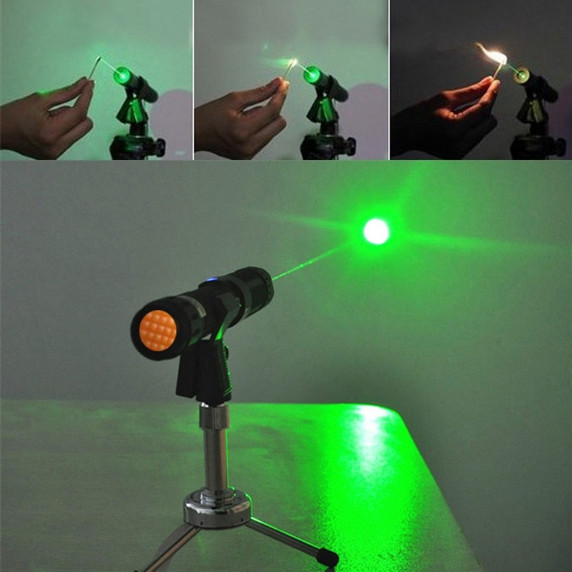All metal materials have high reflectivity to infrared wave energy at room temperature, but the CO2 laser pointer emitting a 10.6um beam in the far-infrared band is still successfully applied to many metal laser cutting practices. The initial absorption rate of 10.6um laser beam by metal is only 0.5%~10%. However, when a focused laser beam with a power density exceeding 106w/cm2 is irradiated on the metal surface, it can be quickly used in microseconds. The surface began to melt. The absorption rate of most metals in the molten state rises sharply, generally by 60% to 80%.
Pure titanium can well couple the heat energy converted by the focused laser beam. When the auxiliary gas is oxygen, the chemical reaction is fierce, and the cutting speed is faster, but it is easy to generate an oxide layer on the cutting edge, and accidentally can cause overburn. For the sake of safety, it is better to use air as the auxiliary gas to ensure the cutting quality. The laser cutting quality of titanium alloy commonly used in the aircraft industry is better. Although there will be a little sticky slag at the bottom of the cut seam, it is easy to remove.
Nickel-based alloys are also called super alloys, and there are many varieties. Most of them can be oxidized fusion cutting. Modern laser cutting machines can cut carbon steel plates with a maximum thickness of up to 20mm. The cutting seam of carbon steel can be controlled within a satisfactory width by using the oxidation melting cutting mechanism, and the cutting seam for thin plates can be as narrow as about 0.1mm. Laser cutting is an effective processing tool for the manufacturing industry that uses stainless steel sheet as the main component. Under strict control of the heat input in the laser cutting process, the heat-affected zone of the trimming can be restricted from becoming small, thereby effectively maintaining the good corrosion resistance of such materials.
Most alloy structural steels and alloy tool steels can be used to obtain good trimming quality by green laser pointer cutting. Even for some high-strength materials, as long as the process parameters are properly controlled, straight, non-sticky slag cutting edges can be obtained. However, for tungsten-containing high-speed tool steel and hot mold steel, there will be erosion and slag sticking during laser cutting machine processing.
Aluminum cutting is a melting laser cutting mechanism, and the auxiliary gas used is mainly used to blow away the molten product from the cutting area, and usually a better cut surface quality can be obtained. For some aluminum alloys, attention should be paid to prevent the occurrence of intercrystalline micro-cracks on the surface of the slit. Pure copper (red copper) basically cannot be cut with CO2 laser beam due to its high reflectivity. Brass (copper alloy) uses a higher laser power, and the auxiliary gas uses air or oxygen, which can cut thinner plates.
